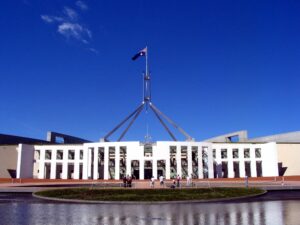Time for industry to set agenda on HFC phasedown
- PostedPublished 4 March 2014

THE Federal Government is likely to soon consider how it can work with the refrigerant industry in reducing greenhouse gas emissions as part of its direct action policy.
Over the next few years Australian industry will be asked whether and how it can shift from high global warming potential (GWP) HFC refrigerants like R134a, as is already happening in Europe and under discussion elsewhere.
Refrigerants Australia executive director Greg Picker made these predictions at a recent VASA board meeting in Queensland, where he was guest speaker.
“With the expected repeal of the carbon tax, there will be incredible pressure (on the government) to ensure it can reduce emissions quickly and with certainty,” he said.
A clear message to take from Mr Picker’s prediction is that the industry needs to be prepared, proactive and involved in setting the agenda rather than being forced to react to government policy changes.
“The government will be engaged in a significant emissions debate. The issues won’t be whether they believe in climate change, it will be can they meet the emissions reductions target given the amount budgeted for this task,” said Mr Picker.
“They are going to look around for easy wins and I can tell you they will look at this industry as a place for easy wins.
“This industry has a long history of working collaboratively with Government and given the high global warming potential of some refrigerants there is the opportunity to reduce emissions comparatively cheaply.”
The adoption of HFC refrigerants was instrumental in the successful international effort to reducing damage to the ozone layer, and the industry agrees that the time has come to address the issues surrounding their high GWP and effect on the environment.
“We are looking at a fundamental change within industry, and the industry is trying to figure out what it needs and wants,” said Mr Picker.
“Internationally there is a move to look at refrigerants, particularly HFC refrigerants and to take steps over the next 15-20 years to significantly, in global warming terms, reduce what comes out to the market.”
The European Union is making steps to cut current emissions of HFC, PFC and SF6 (collectively known as F-gases) by two-thirds by 2030, while North America is proposing a phasedown that brings HFCs under the Montreal protocol that was used to address ozone-depleting gases.
But Mr Picker warned that there is no certainty yet over how the issue will be handled in Australia. “There are serious proposals being talked about in international negotiations but what we will get really isn’t clear,” he said.
“How Australia takes this forward really isn’t clear either. The federal government is running workshops to look at the Australian market and to assess what sort of emission reductions we can manage over a period of time, so they can negotiate.”
“Hopefully”, Mr Picker concluded, “we will get some certainty soon over what will happen internationally – then we can better consider what steps should happen here. In any case, it will be important for industry to start imagining the future we want and what we need to do to get there.”
- CategoriesIn Latest News

